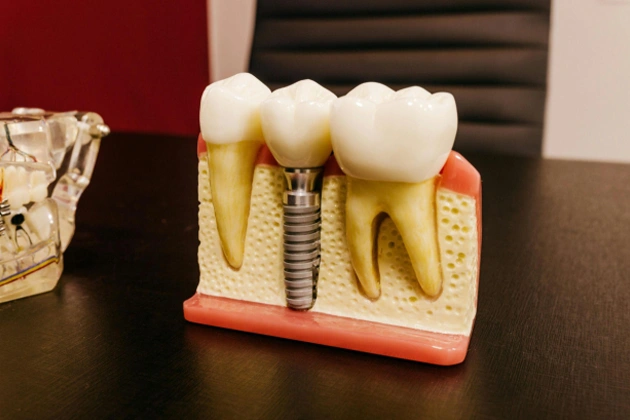When you’re considering a single tooth implant procedure in Long Beach, expect an in-depth dental evaluation to kick things off. Your dentist will review your medical history and assess oral health through radiographic imaging. This sets the stage for a customized treatment plan, ensuring precision and care. Curious about what happens next, from anesthesia options to post-surgery care and beyond? There’s a journey ahead, and understanding it fully could be the key to a successful outcome.
Initial Dental Consultation
Before undertaking a single tooth implant procedure, it’s crucial to undergo an initial dental consultation to evaluate your suitability for the treatment. During this consultation, the dentist will meticulously review your dental history to identify any previous dental work or conditions that could impact the implant’s success. This involves discussing past extractions, restorations, or periodontal issues.
Additionally, an overall health assessment will be conducted to guarantee there are no systemic conditions that might compromise healing, such as diabetes or cardiovascular diseases. You’ll need to provide a detailed medical history, including any medications or allergies. The dentist will assess these factors to formulate a tailored treatment plan, guaranteeing the implant procedure is both safe and effective for your unique needs.
Comprehensive Oral Examination
A thorough oral examination is a critical component in preparing for a single tooth implant. During this examination, your dentist will meticulously review your comprehensive dental history, evaluating past treatments, existing conditions, and oral habits. They’ll examine your mouth for signs of disease, decay, or structural issues that could impact the implant’s success. Radiographic imaging may be used to ascertain bone density and anatomical structures. Your dentist will also discuss personalized preventive care strategies to optimize your oral health before the procedure. These strategies might include professional cleanings, fluoride treatments, or adjustments in oral hygiene routines. This examination guarantees that any potential complications are identified and addressed, providing a solid foundation for the implant’s long-term success.
Treatment Planning and Scheduling
Following the thorough oral examination, the next step involves meticulous treatment planning and scheduling for the single tooth implant. Your dentist will craft a strategic plan tailored to your specific needs, addressing any necessary treatment plan modifications. This could include adjustments based on bone density or adjacent teeth positioning. The scheduling phase is critical; appointment scheduling considerations must account for your availability and the procedural timeline. Typically, multiple visits are necessary, so flexibility and coordination are essential. Each phase of the implant process, from initial placement to final restoration, requires precise timing for ideal healing and integration. Patients seeking affordable single tooth implants in Long Beach can rely on expert guidance to ensure that each appointment aligns with treatment objectives and desired outcomes.
Pre-Surgery Preparations
Before undergoing a single tooth implant procedure, you’ll need to attend an initial consultation where a thorough evaluation of your oral health is conducted. This includes meeting pre-procedure health requirements such as ensuring ideal periodontal health and addressing any underlying conditions. Additionally, adhering to specific medication and dietary guidelines, like adjusting anticoagulant dosages or fasting instructions, is essential for minimizing intraoperative risks.
Initial Consultation Steps
When preparing for a single tooth implant procedure, understanding the initial consultation steps is indispensable to guarantee a successful outcome. First, your dentist will conduct an extensive dental history review. This involves assessing past dental treatments, current oral health status, and any underlying conditions that might affect the procedure. It’s vital to provide your dentist with detailed information to aid in accurate planning.
Next, you’ll discuss patient concerns, which is pivotal for aligning expectations and addressing any apprehensions you might have. This dialogue allows the dentist to explain the procedure, potential risks, and benefits, ensuring you’re informed and comfortable. Diagnostic imaging, such as X-rays or CT scans, may also be utilized to evaluate bone structure and tooth positioning, crucial for implant success.
Pre-Procedure Health Requirements
Guaranteeing ideal health before undergoing a single tooth implant procedure is critical for minimizing complications and promoting healing. Begin by providing your dentist with an extensive dental history, including any previous surgeries, restorations, or existing oral conditions. This information helps assess the current state of your oral health and identify any potential risk factors. Your general health conditions are equally important. Disclose any chronic illnesses, such as diabetes or hypertension, as they can impact the healing process and the success of the implant. A thorough medical evaluation may be required to ensure systemic stability. Additionally, inform your dental professional about any allergies, particularly to medications or anesthesia, as this will guide the selection of suitable treatment protocols and materials.
Medication and Dietary Guidelines
A thorough understanding of medication and dietary guidelines is imperative once your health prerequisites are verified. You’ll receive a precise medication dosage schedule from your dental professional. Often, antibiotics are prescribed to prevent postoperative infections, and pain management medications are tailored to your specific needs. It’s vital you adhere strictly to this schedule to optimize recovery and minimize complications.
Regarding dietary restrictions during recovery, fasting is generally required 8-12 hours before your procedure. Post-surgery, a soft food diet is recommended to prevent undue pressure on the implant site. Avoid hard, sticky, or crunchy foods that could disrupt the healing process. Proper nutrition will support tissue repair, so incorporate protein-rich and vitamin-dense foods as soon as advised by your dental team.
Anesthesia and Sedation Options
How does the choice of anesthesia and sedation influence the single tooth implant procedure? Selecting appropriate anesthesia and sedation is pivotal for effective pain management and securing patient comfort throughout the procedure. Local anesthesia is commonly used to numb the implant site, preventing any sensation of pain. For those with dental anxiety or complex medical histories, sedation options such as nitrous oxide, oral sedatives, or intravenous sedation can be considered. These help in keeping you relaxed and calm, consequently enhancing overall patient experience. Your dental professional will evaluate your medical history, anxiety level, and procedure complexity to recommend the best option. Each method is designed to minimize discomfort and guarantee a smooth, stress-free procedure, tailored to your individual needs.
Implant Placement Surgery
During the implant placement surgery, precision and adherence to protocol are vital for the success of the procedure. First, an incision is made in the gum tissue to expose the jawbone. Next, a specialized drill is used to create a precise hole, following calculated measurements. This step is critical to guarantee the implant’s stability. The titanium implant is then inserted into the bone, acting as an artificial root. Before closing the incision with sutures, the alignment is meticulously checked.
Post operative considerations include managing swelling and monitoring for signs of infection, essential for successful osseointegration. The healing period allows the bone to fuse with the implant, establishing a strong foundation for the eventual crown. Proper adherence to these surgical steps is indispensable for ideal outcomes.
Post-Surgery Care Instructions
Post-operative care is essential for ensuring the success of a single tooth implant. Immediately following your procedure, adhering to prescribed post operative antibiotics is crucial to prevent infection. Take the antibiotics as directed, without missing doses. For effective pain management strategies, consider using prescribed analgesics or over-the-counter options like ibuprofen. These help manage discomfort and reduce inflammation. Apply an ice pack intermittently for the first 24 hours to minimize swelling. Avoid strenuous activities and keep your head elevated while resting. Maintain oral hygiene cautiously by gently rinsing with a saltwater solution, avoiding the surgical site. Refrain from using straws or smoking, as these actions can disrupt the healing process. Follow these instructions to support paramount recovery.
Healing and Osseointegration Period
During the healing and osseointegration period, you can expect the bone fusion process to take approximately three to six months, allowing the implant to securely integrate with your jawbone. To manage post-operative discomfort effectively, adhere to prescribed medication schedules and maintain paramount oral hygiene to prevent infection. It’s vital to attend follow-up appointments to monitor progress and ascertain proper healing.
Bone Fusion Process Timeline
How long does it take for the bone to successfully fuse with a dental implant? Typically, the osseointegration process spans three to six months. During this period, the implant becomes a stable part of your jawbone, a vital factor in achieving bone structure stability. This timeline can vary based on individual health factors and the quality of the bone. Initial healing, where your bone begins to adhere to the implant, occurs within the first few weeks. However, complete osseointegration, where the bone fully integrates with the implant surface, can extend over several months. Ensuring a successful fusion timeline is essential as it determines the implant’s long-term functionality and durability. Your dentist will monitor the progress, adjusting timelines as needed for ideal results.
Managing Post-Op Discomfort
Traversing through the post-operative phase, you’ll likely encounter some discomfort, a common aspect of the healing and osseointegration period. Effective pain management is paramount during this time. Typically, your dental surgeon will recommend a regimen of anti-inflammatory medications to mitigate swelling and alleviate pain. Non-steroidal anti-inflammatory drugs (NSAIDs) such as ibuprofen are commonly prescribed to reduce inflammation and provide symptomatic relief. Adhering strictly to the dosage instructions is indispensable to avoid potential side effects. Additionally, applying an ice pack intermittently to the affected area can help manage swelling within the first 48 hours. It’s imperative to monitor the site for any signs of infection, such as increased redness or pus, and report these to your dental provider promptly for further assessment.
Abutment and Crown Placement
When does the journey toward a complete smile conclude? It comes together with the abutment and crown placement phase. Once the implant securely integrates with the jawbone, the abutment is attached. This small connector post supports the crown, bridging implant and restoration. This stage is pivotal in post placement aesthetics, guaranteeing the prosthetic tooth aligns perfectly with your natural teeth. The crown fabrication process involves creating a custom-designed crown that matches your teeth in color, shape, and size. Using precise impressions, the dental lab crafts the crown to certify a seamless fit and function. Once the crown is affixed to the abutment, your smile is restored, mirroring the natural aesthetics and functional integrity of your original tooth.
Long-Term Care and Maintenance
To guarantee the durability of your single tooth implant, it’s vital to adhere to routine dental check-ups, allowing your dentist to monitor the implant’s condition and surrounding tissues. Implementing proper oral hygiene practices, such as regular brushing and flossing, helps prevent plaque accumulation and potential peri-implantitis. Additionally, opting for an implant-friendly diet minimizes excessive forces on the implant, promoting its stability and functionality over time.
Routine Dental Check-Ups
Regular dental check-ups are essential for the long-term care and maintenance of a single tooth implant. These visits enable your dentist to implement tooth monitoring habits that guarantee the implant’s stability and integration with the surrounding bone. During these appointments, professionals will conduct precise evaluations to detect any early signs of complications, such as peri-implantitis. Adopting preventative treatments during check-ups can mitigate risks associated with implant failure. Diagnostic imaging, such as X-rays, will be utilized to assess bone density and implant position. Additionally, your dentist may recommend specific adjustments or interventions to extend the lifespan of the implant. Consistent check-ups are critical for maintaining ideal oral health and ensuring the longevity and functionality of your dental implant.
Proper Oral Hygiene
In addition to routine check-ups, maintaining proper oral hygiene is paramount for the long-term success and maintenance of a single tooth implant. Employing effective brushing techniques is essential. Use a soft-bristled toothbrush and non-abrasive toothpaste, ensuring you brush twice daily. Position the brush at a 45-degree angle to the gum line, utilizing gentle circular motions to prevent implant damage. Equally important is mastering flossing methods. Select implant-safe floss or interdental brushes to clean between the implant and adjacent teeth. Glide the floss gently, forming a C-shape around each tooth, ensuring you reach beneath the gum line. This meticulous approach mitigates plaque accumulation and reduces peri-implant disease risk, safeguarding your investment in a single tooth implant.
Implant-Friendly Diet Choices
While choosing foods for ideal implant health, consider an implant-friendly diet that supports the longevity and integrity of your single tooth implant. Prioritize soft food choices post-procedure to minimize stress on the healing implant site. Opt for nutrient-rich options that facilitate tissue repair and bone integration. Foods like mashed potatoes, yogurt, and soft-cooked vegetables provide essential vitamins and minerals without compromising implant stability. Incorporate lean proteins such as eggs or fish, which are easy to chew and swallow. Avoid hard, crunchy foods that can disrupt the implant’s placement. As healing progresses, gradually reintroduce firmer foods while maintaining a balanced diet rich in calcium and vitamin D to strengthen surrounding bone structures. This approach guarantees optimal implant function and durability.
Frequently Asked Questions
How Much Does a Single Tooth Implant Cost in Long Beach?
In Long Beach, a single tooth implant could cost between $3,000 and $5,000. The implant procedure duration typically lasts 1-2 hours. Expect an implant surgery recovery timeline of several weeks to guarantee proper healing and integration.
Are There Financing Options Available for Dental Implants?
Yes, there’re various financing options available for dental implants, including payment plans and financial assistance programs. These options can help manage costs by spreading payments over time, ensuring you receive necessary treatment without immediate financial strain.
How Long Does the Entire Implant Process Take From Start to Finish?
From start to finish, the entire implant process typically spans 3 to 9 months. Your surgical timeline involves implantation and osseointegration, while the recovery duration includes healing and crown placement, ensuring ideal function and esthetics.
What Are the Potential Risks or Complications of a Tooth Implant?
You might encounter gum irritation or implant rejection after a tooth implant. Gum irritation can cause discomfort, while implant rejection, though rare, may result from infection or improper integration, necessitating careful post-operative monitoring and management.
Can I Eat Normally With a Dental Implant?
Yes, you can eventually eat normally with a dental implant, but initially, follow post-procedure dietary guidelines. Soft foods are recommended first. Proper implant maintenance is essential for long-term success, ensuring your implant integrates well and operates effectively.










